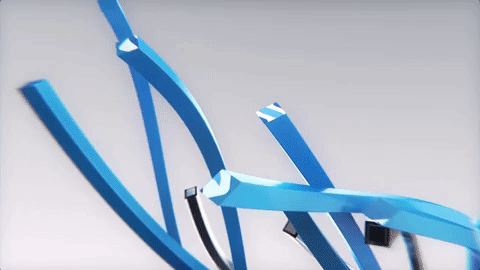INDUSTRIAL EFFLUENTS AND THEIR SOURCES
The textile industry is one of the oldest industrial sectors in the world. Textile industries consume large volume of water and chemicals for wet processing of textiles. The effluents from textile units have various types and qualities of wastewater. The wastewater from printing and dying units in a textile plant are often rich in colour, containing residues of colouring agents and chemicals, and needs appropriate treatment.
The integrated textile industry is engaged in production of yarn, fabric and finished goods from raw fibres. Initially, raw fibres are transformed into yarn, thread or webbing. Then the yarn is converted into fabric in looms. Fabric is then dyed or printed to convert into finished product. In short, process flow is fibre manufacturing, yarn manufacturing, fabric production and finishing processes. Textile manufacturing units use natural and synthetic fibres, different chemicals as raw materials and other utilities such as water, energy and labour.
The textile industry is water and labour intensive and produces pollutants of different forms. The manufacturing operation also generates vapours during dyeing, printing and curing of dye or colour pigments. Dust emission is associated with fibre processing. Other than these process operations, textile mills have wood, coal or oil fired boilers and thermic fluid heaters which are point emission sources.
Major environmental issues in textile industry result from wet processing. Wet processes may be carried out on yarn or fabric. The transformation of raw cotton to final usable form involves different stages. The various important wet processes involved in the textile industry are as follows:
1. Sizing / Slashing:
This process involves sizing of yarn with starch or polyvinyl alcohol (PVA) or carboxy methyl cellulose (CMC) to give necessary tensile strength and smoothness required for weaving. The water required for sizing varies from 0.5 to 8.2 litre / kg of yarn with an average of 4.35litre / kg.
2. Desizing:
The sizing components which are rendered water soluble during sizing are removed from the cloth to make it suitable for dyeing and further processing. This can be done either through acid (sulphuric acid) or with enzymes. The required water at this stage varies from 2.5 to 21 L /Kg. with an average of 11.75.
3. Scouring / Kiering:
This process involves removal of natural impurities such as greases, waxes, fats and other impurities. The desized cloth is subjected to scouring. This can be done either through conventional method (kier boiling) or through modern techniques (continuous scour). Kiering liquor is an alkaline solution containing caustic soda, soda ash, sodium silicate and sodium peroxide with small amount of detergent. The water required for this process varies from 20 – 45 L/ Kg. with an average of 32.5
4. Bleaching:
Bleaching removes the natural colouring materials and renders the cloths white. More often the bleaching agent used is alkaline hydrochloride or chlorine. For bleaching the good quality fibre, normally peroxide is used.
The chemicals used in peroxide bleaching are sodium peroxide, caustic soda, sulphuric acid and certain soluble oils. The water and chemical requirement and the effluent generation normally vary based on the type of operation and the material (yarn / cloth) to be processed. Bleaching the yarn both through hypo‐chloride and hydrogen peroxide methods require same quantity of water and it varies between 24 to 32 L/kg. But in the cloth bleaching, the water requirement is much higher and it fluctuates between 40 ‐ 48 L/kg.
5. Mercerising:
The process of Mercerisation provides lustre, strength, dye affinity and abrasion resistance to fabrics. It is generally carried out for cotton fabrics only for easy dyeing. Mercerisation can be carried out through cold caustic soda solution followed by washing with water several times. The water required for this process varies from 17 to 32 L/kg, with an average of 24.5
6. Dyeing:
Dyeing is the most complex step in wet processing which provides attractive colour for the product. Dyeing is carried out either at the fibre stage, or as yarn or as fabrics. For dyeing process, hundreds of dyes and auxiliary chemicals are used.
In brief, the water requirement for dyeing purpose (include all types and shades) varies from 36 – 176 L/kg with an average of 106. The effluent generation during dyeing process fluctuates from 35 to 175 L/kg with an average of 105 L/kg (CPCB, 2015).
The four main sources of wastewater from the textile industry are wastewater from dyeing, chemical fibre production, wool scouring and dissolved fibre waste. Of these, dyeing is the main source of wastewater pollution, which discharges huge volume of wastewater every day.
If your witness vote is still wide enough to accumulate, please kindly vote @rival for witness


Congratulations @theartisangroup! You have completed the following achievement on Steemit and have been rewarded with new badge(s) :
Click on the badge to view your Board of Honor.
If you no longer want to receive notifications, reply to this comment with the word
STOP